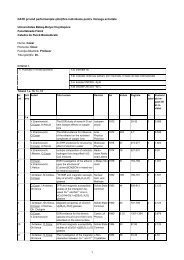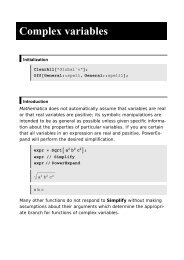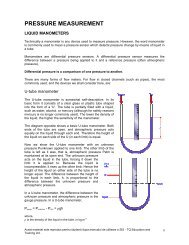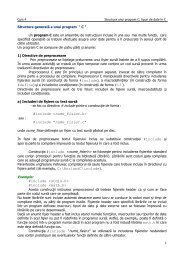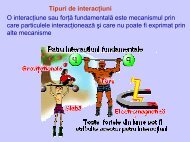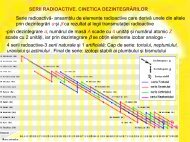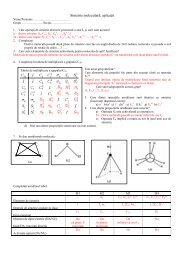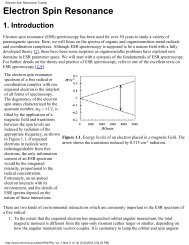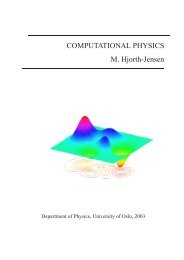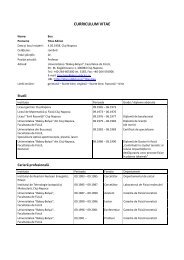Modul 2 Plane wave method (PWM) crystal band diagrams http ...
Modul 2 Plane wave method (PWM) crystal band diagrams http ...
Modul 2 Plane wave method (PWM) crystal band diagrams http ...
Create successful ePaper yourself
Turn your PDF publications into a flip-book with our unique Google optimized e-Paper software.
Using another property results in the simplification [8]<br />
In previous studies of the triangular lattice unit cell, 140 to 225 plane <strong>wave</strong>s were used [1,2,3] to<br />
calculate accurate dispersion curves. Villeneuve and Piché [2] tested the convergence to 841 plane<br />
<strong>wave</strong>s and found that only 225 were necessary for good convergence. The accuracy of any given set of<br />
curves is difficult to predict because the convergence rates can change between differing structures.<br />
The plane <strong>wave</strong> expansion <strong>method</strong> was carried out to construct dispersion curves for along the<br />
Brillouin zone shown in Figure 4. The <strong>method</strong> described using the expansion creates spurious modes<br />
with zero frequency, which were removed. Also, in the in-plane propagation case modes can be<br />
separated by polarization into TE-like ( is in the xy plane) and TM-like ( is in the xy plane)<br />
modes. Two examples have been carried out with = 13.2 using 441 plane <strong>wave</strong>s. TE-like modes<br />
were separated from the result and are shown in Figures 6 and 7 for values of and along the Brillouin<br />
zone. The gap between the first and second <strong>band</strong>s changes with the lattice dimensions, where d refers<br />
to the diameter of the air holes, and a to the lattice spacing. Figure 8 shows the variation.<br />
Figure 6: TE-like modes for air holes embedded in a background of = 13.2 with d/a = 0.5.<br />
(34)




